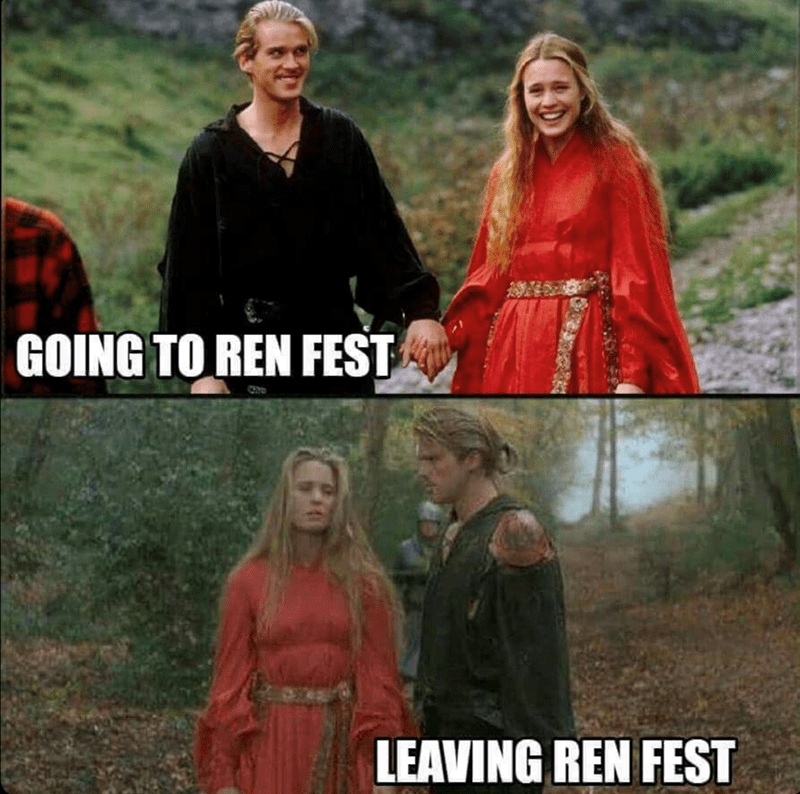When it comes to renaissance festivals, thematic garb is one of the most easily defining features. It’s expected that when you visit a faire village, you’re going to see people in garb, dressed head to toe as Tudor era peasants, merchants, and nobles coming out of the woodwork. And those of us who dress to the nines are quite used to being stopped multiple times a day for photos.
Many people who visit the Ohio Renaissance Festival dress up in full 16th-century historical garb to complement the atmosphere and play along with others. Cast and playtron (the preferred faire term for people who choose to dress up when they visit) alike put a great deal of effort into their costuming, delving into accurate sewing patterns and researching what fabrics and colors would adhere to the strict sumptuary laws of Elizabethan England.
Don’t think that you don’t need to go to quite such lengths! A budget-friendly Halloween costume will not go unappreciated, nor will showing up in comfortable khakis and a t-shirt. You are here to have fun, right? However, let’s say you WANT to dress up. You spend time admiring the unique and creative garb at the faire, dazzled by the hand-crafted costumes to match each weekend’s theme. You want to join in, but you don’t know where to start.
Luckily for you, a clever patron can find most of what they need at the festival. Let’s get into some of the most popular themes at ORF, give you some general ideas and suggestions to go off of, and help you out by showing which vendors you can visit on site to help build your style!
Historical Fashion
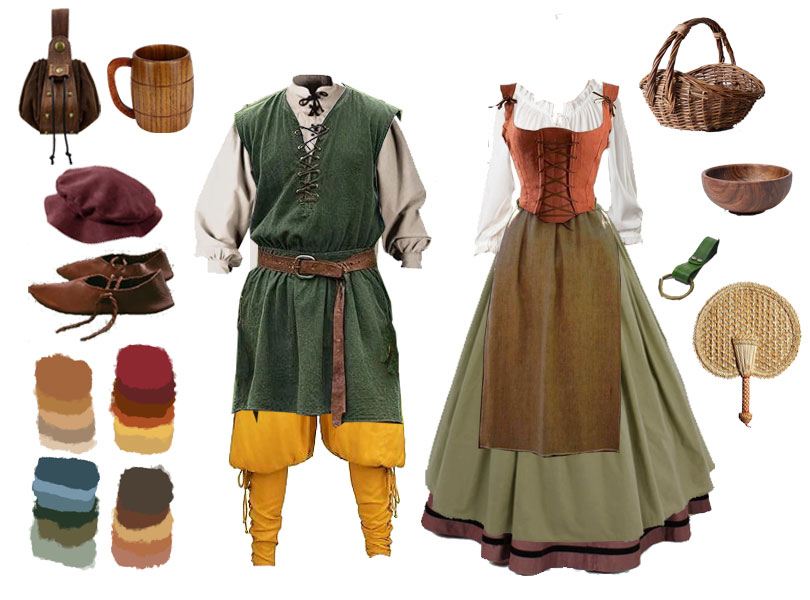
16th-century English fashion is the bread and butter of the Ohio Renaissance Festival. From peasant to court, there is a lot involved in creating historically accurate garb. The good news is that there are multiple resources online that can provide patterns and assistance. The tough-to-swallow news is that you’re going to do the vast majority of it by hand, unless you are lucky enough to work with a seamstress who will help you.
Our Suggestion: Start off by making a mood board or by collecting what inspires you. Think about the color palette you want to aim for, and the overall ‘look’ that you want to achieve. Go for a comfortable, easy-to-acquire peasant look before taking on the process of trying to build a big court garb. Also, don’t buy anything that is made from rayon, polyester, or spandex. It will break down after a few seasons, and you will sweat yourself silly during the September and early October weeks.
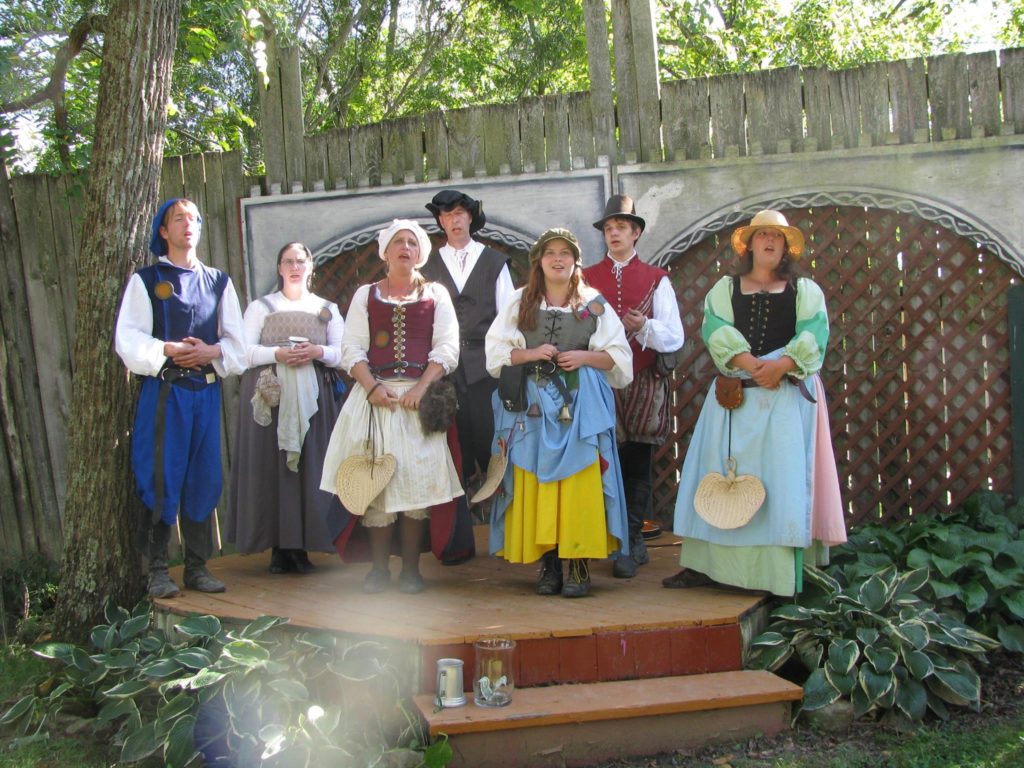
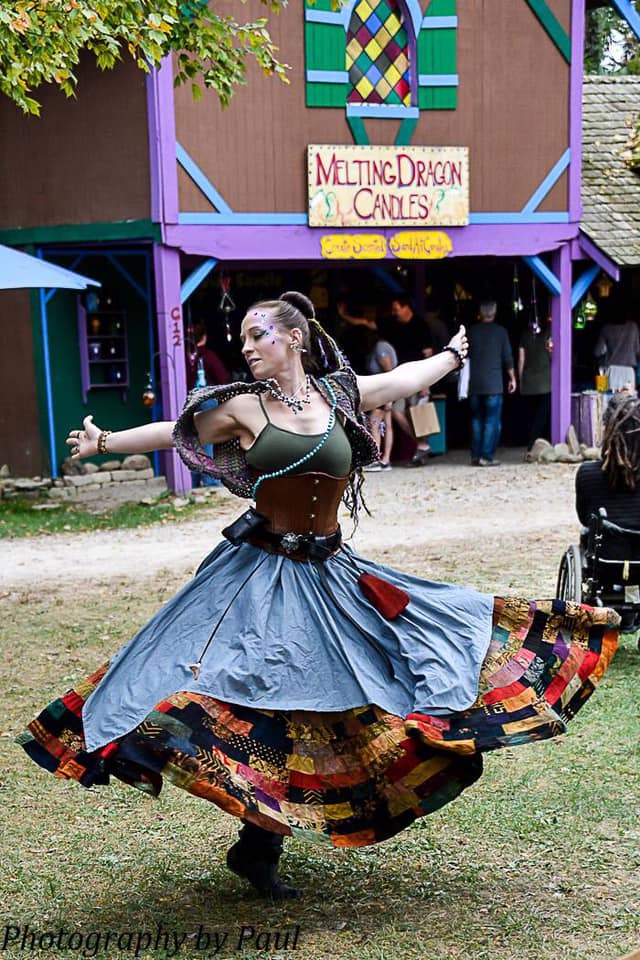
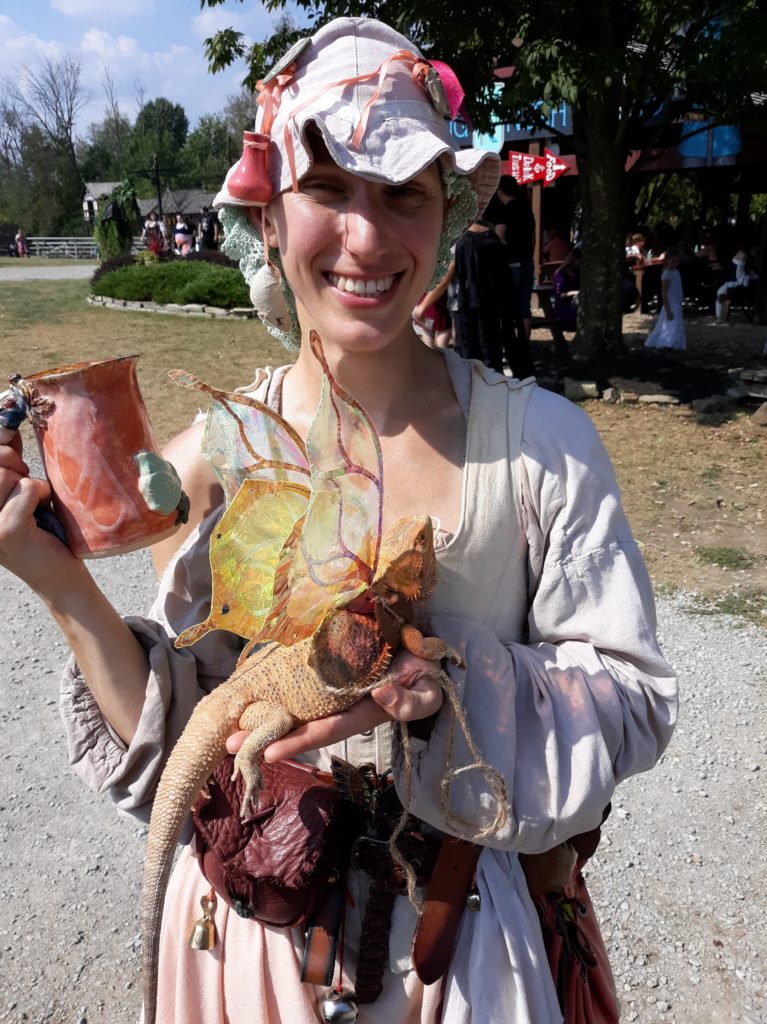
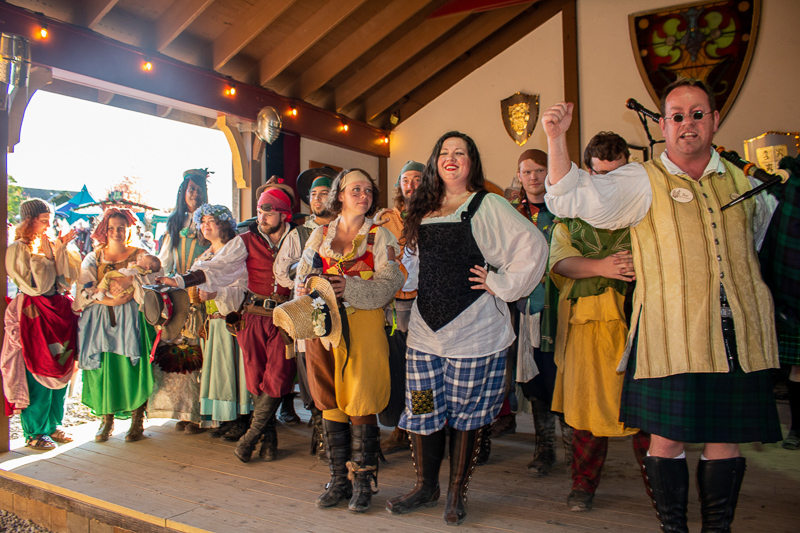
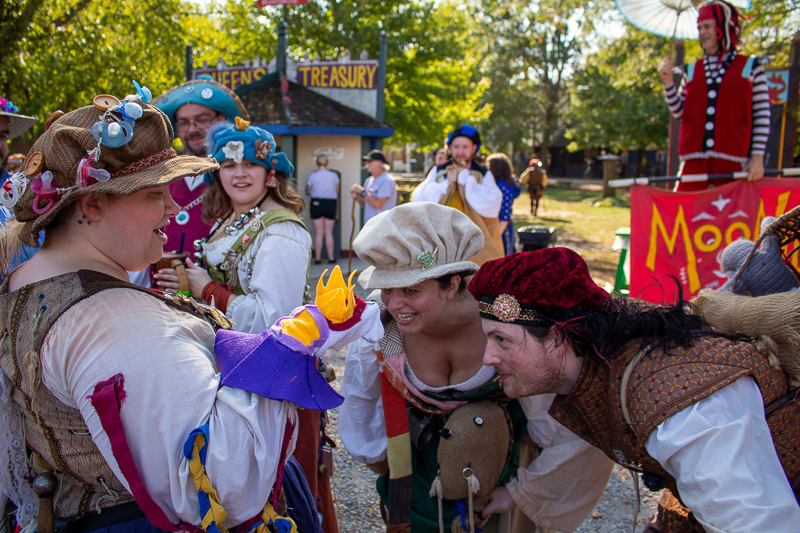
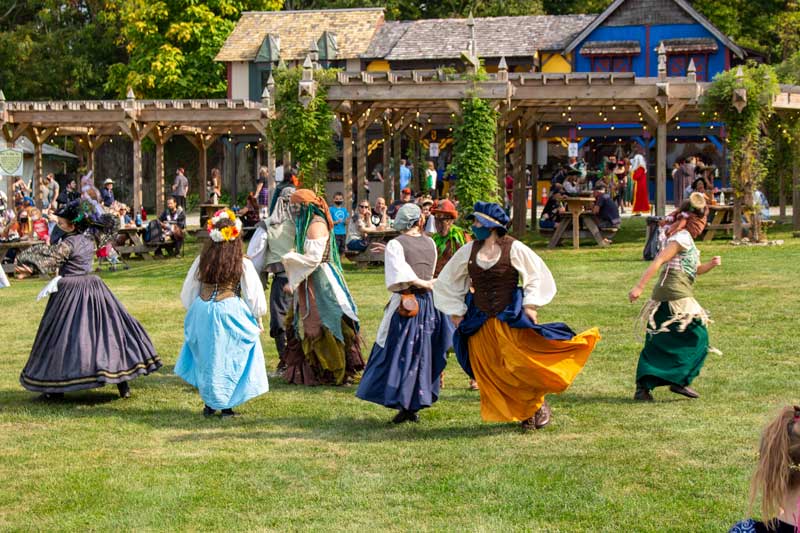
ORF Booths to Visit
Damsel in this Dress – Bard’s Lane
Oddfellows Attire – Joust Road
Sofi’s Stitches – Minstrel’s Grove
Tunky’s Garb Shop – Poet’s Crossing
Unicorn Clothing – Bard’s Lane
White Pavilion – Upson Downs
Fae-Folk
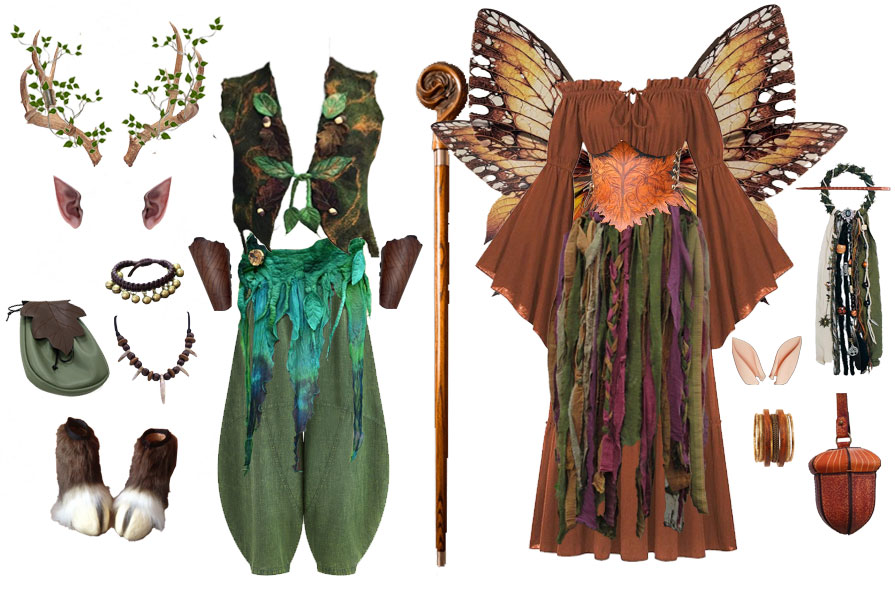
The fantasy realm of the fairies provides a cornucopia of potential for garb lovers that is not limited to wings and glitter. Our concept of the fae has changed greatly over the centuries, but the core aesthetic is generally understood. It’s important to know that whether they are a gargantuan tree spirit or a tiny sprite with the wingspan of an albatross, fae are not afraid to take up space. Whimsical, unique, nature-based garb that creates a sense of the magical in the everyday.
Our Suggestion: Begin by deciding what type of fae folk you want to be. There are sprites, pixies, elves, and dryads that embody glamour and playful mischief. On the other hand, banshees and trolls are counted among the wicked and cunning fae, so feel free to choose a kelpie or changeling for your inspiration. Fairy garb allows for more freedom with color, patterns, and style. You may want to base your creation on a season, a specific plant/animal, or one of the elemental forces. When deciding on the look for your fairy, you want their underlying trait to present itself, to become an embodiment of the fae’s nature counterpart.
For example, a selkie might have seal pattern freckles and wear blue tones to symbolize the ocean. Perhaps they have sharp teeth and carry their ‘sealskin’ with them. You could further the look by using fishing nets as a skirt overlay or making jewelry that looks like seaweed.
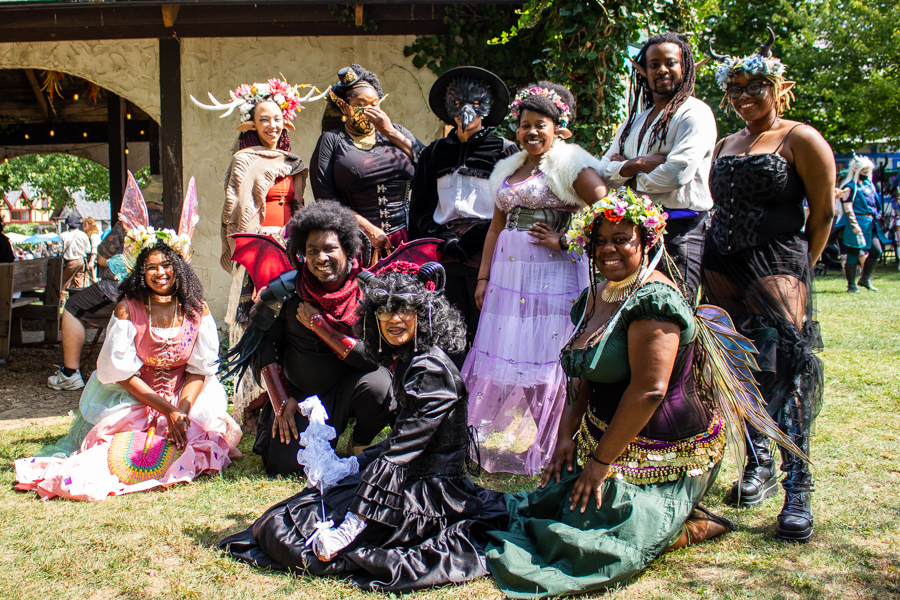
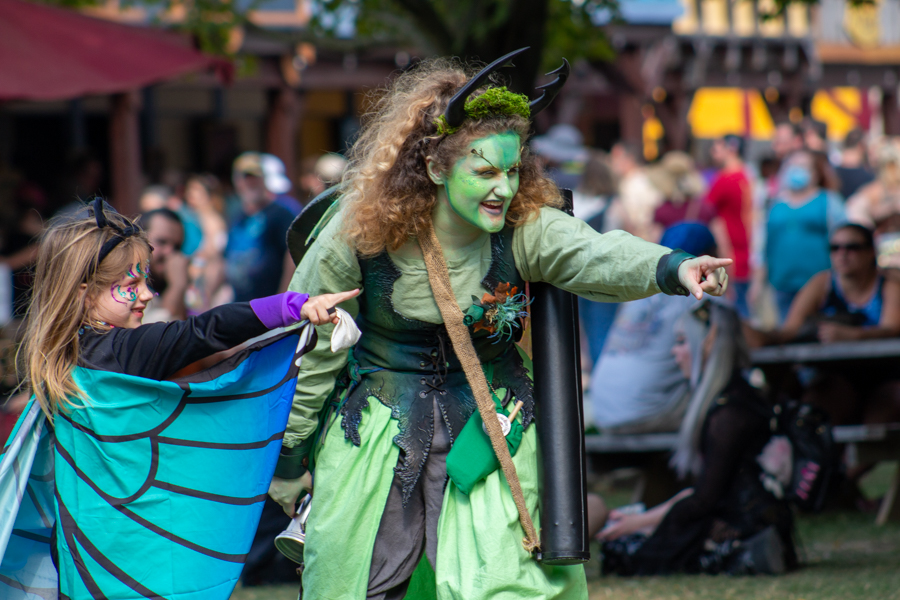
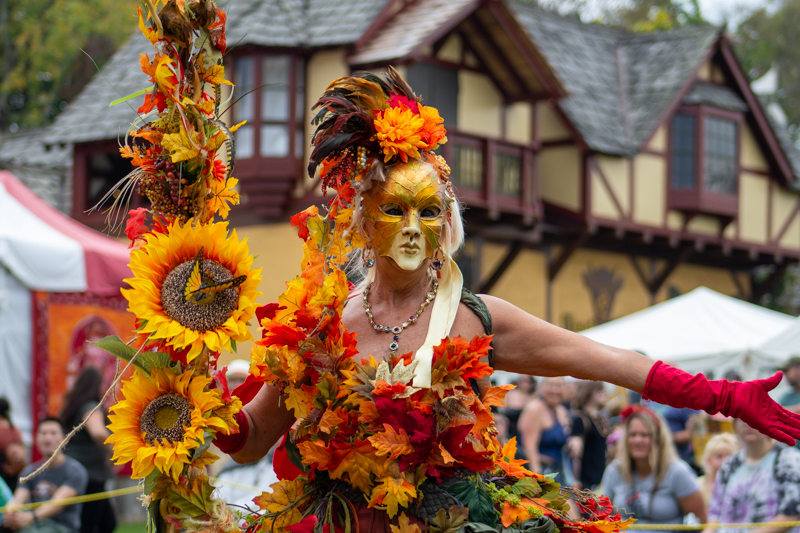
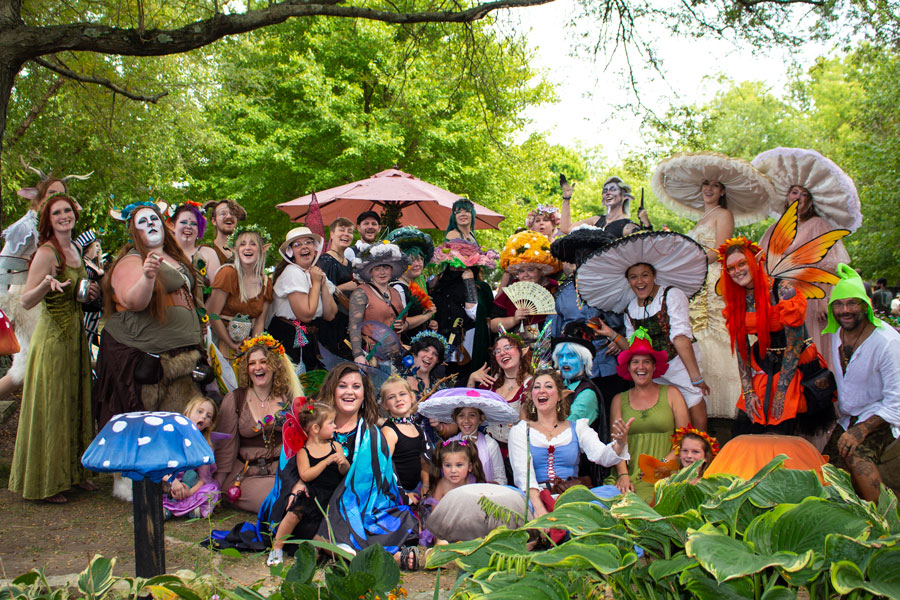
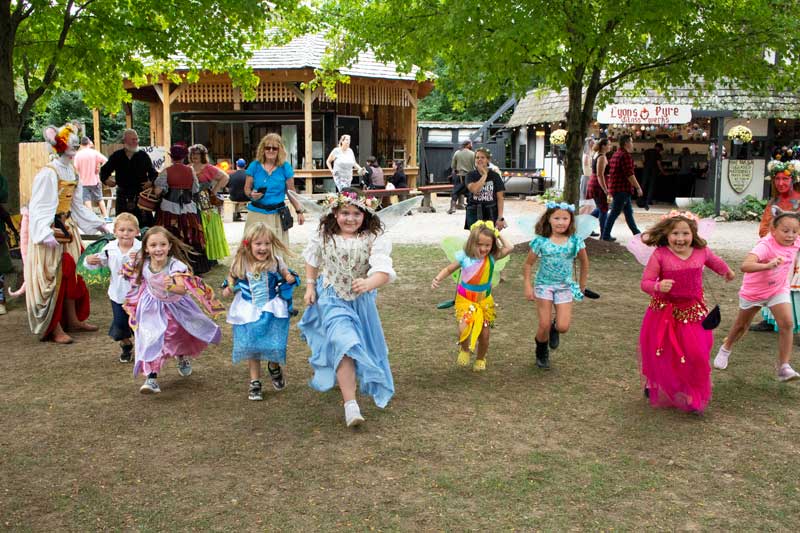
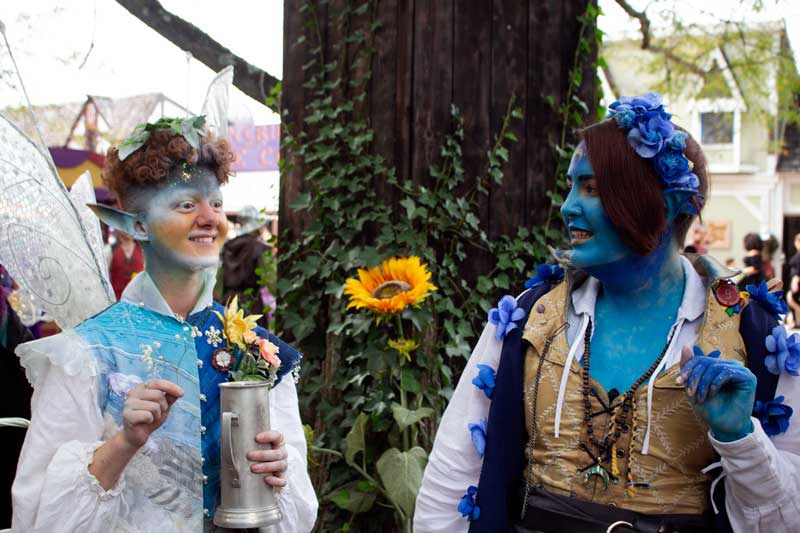
ORF Booths to Visit:
Aradani Studos – Troll Crossing
A Viking Wife and Company – Bard’s Lane
Blue Flame Trading Post – Market Square
Damsel in this Dress – Bard’s Lane
Gypsy Spirit – Troll Crossing
Little Shop of Jingles – Minstrel’s Grove
Silver Squirrel – Wanderer’s Way
Unicorn Clothing – Bard’s Lane
Ye Olde World Trendz – Upson Downs
Pirates
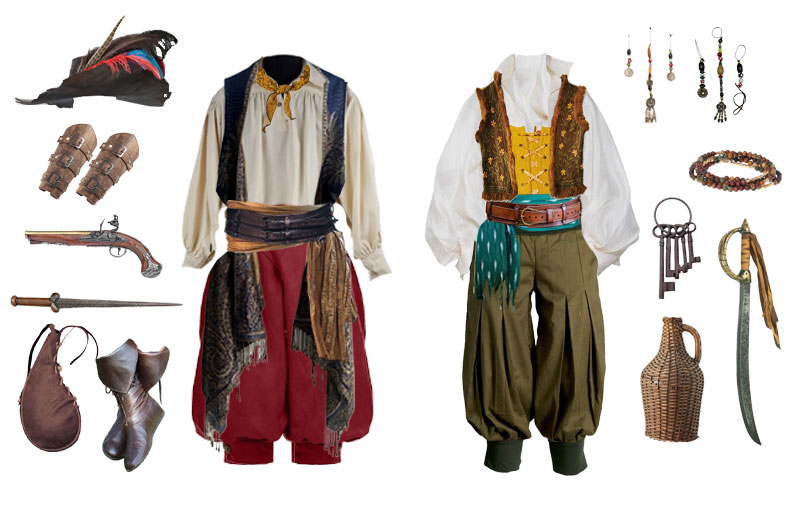
Those scurvy blaggards that sail the seas have always been romanticized. Their connection to the vast ocean, travel, potential wealth, and freedom inspire all of us to live life by our own rules. While the Ohio Renaissance Festival takes place in the year 1572, the most popular interpretation is based on the Golden Age of Piracy, around 1650 – 1730. Pirate garb allows for a wide array of influence, as they would be well-traveled sailors who stopped at foreign ports and traded with locals.
Our Suggestion: A worldly pirate would look a bit like a mish-mosh of comfort and style, distinguishing themselves among the rabble as a seadog. Now not everyone can be the captain, so it helps to pick a role for yourself, such as a navigator, boatswain, master gunner, surgeon, or cook. This also lets you embellish your outfit beyond the usual belts, belts, more belts, and guns. Add color and pattern to your selection as well. Pirates harassed trading vessels going to and from distant shores; Morocco (Barbary), Jamaica, Haiti (Tortuga), Africa, Iceland, Asia, to name a few. So you could get away with trinkets and garb items that would not be found in England.
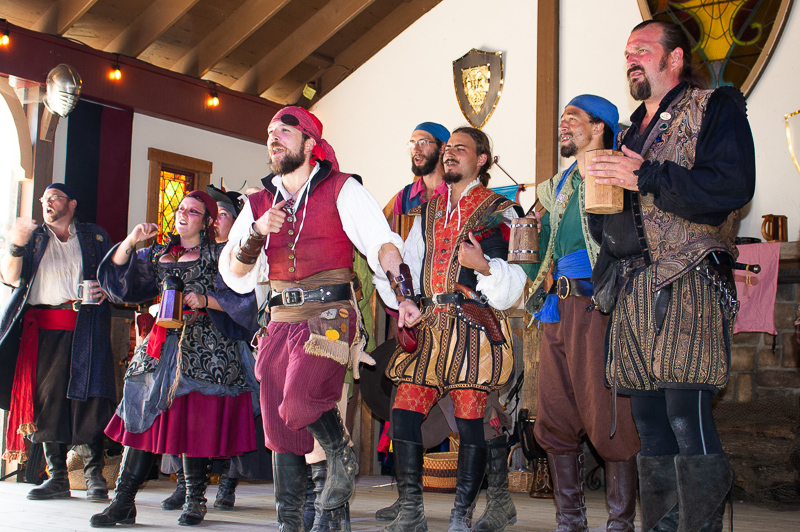
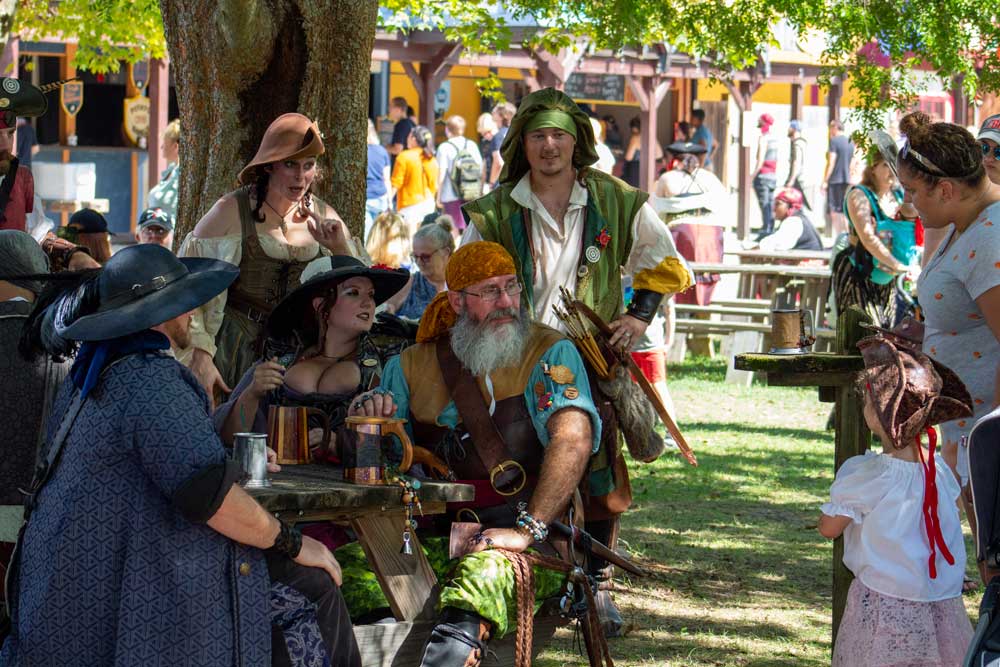
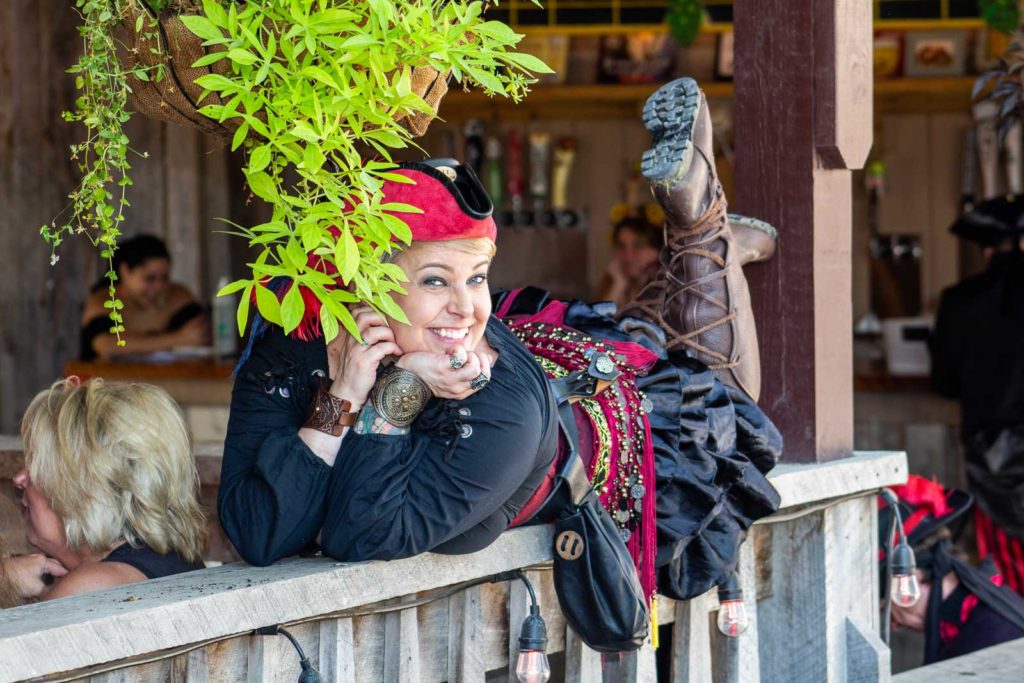

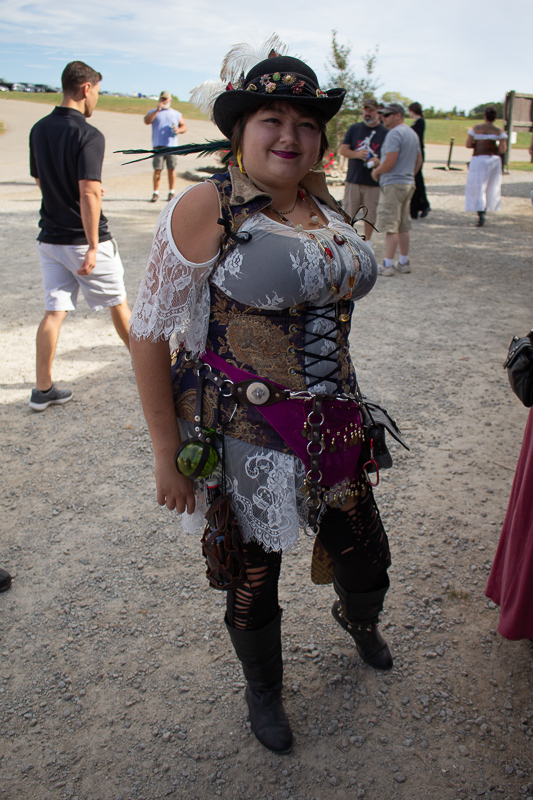
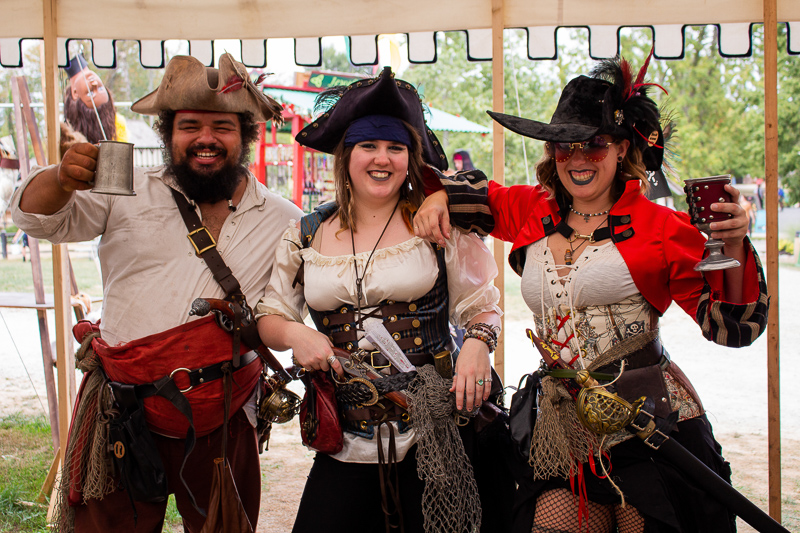
ORF Booths to Visit:
A Roughish Highlander – Upson Downs
Authentic Wardrobe – Wanderer’s Way
Crimson Chain Leatherworks – Wanderer’s Way
Ear Art – Bard’s Lane
Griffan Works Leather – Upson Downs
Mother Hattie’s Hat Shop – Upson Downs
Oddfellows Attire – Joust Road
Puck’s Creations – Market Square
Son of Sandlar – Troll Crossing
The Gilded Lily – Bard’s Land
Tunky’s Garb Shop – Poet’s Crossing
White Pavilion – Upson Downs
Vikings
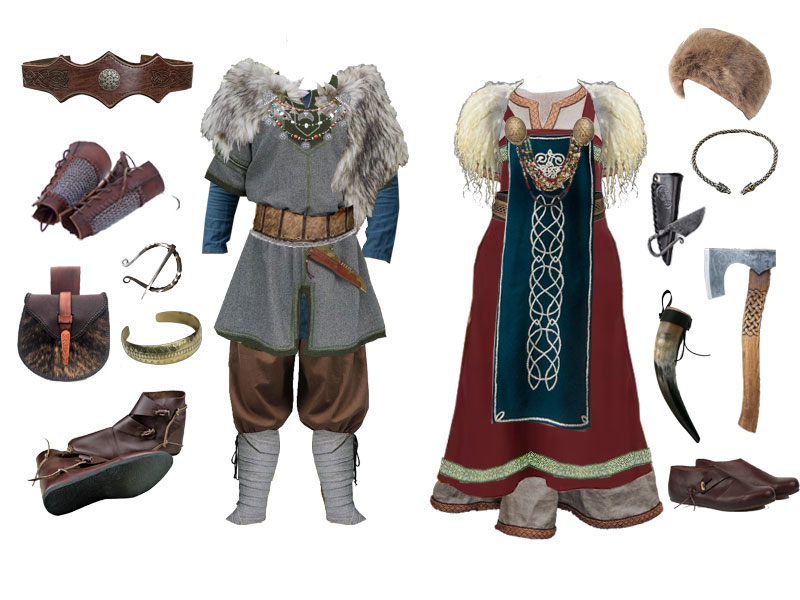
There are two kinds of Viking garb: historically and culturally accurate Nordic clothing, or fur, leather, bones, and war paint. It’s important to remember that the people who made up the infamous raiders were farmers, merchants, and craftsmen during the rest of the year. Their ancestry originates in Norway, Denmark, and Sweden, with evidence of their explorations being found in England, Russia, Canada, Istanbul, and (potentially) Africa. They dressed for their homeland, taking care to layer up in wool and linens. Social status could be easily told by the quality, color, and detail of the clothing. Not to mention that the Norse people wore their wealth literally on their sleeves.
Note: The Viking raid on the Emirate of Nekor (modern-day Morocco) in 858 AD is currently under archeological debate. However, the remains of mice similar to Scandinavian house mice of the era that were found, dated to 903 – 1036 AD on the island of Madeira, suggest possible landings.
Our Suggestion: Find a nice balance between the historical and modern garb for a more creative attire. The most basic Norse clothing is very simple, but can easily be dyed, trimmed, and embroidered for a look that suits the individual. Viking imagery, such as Thor’s Hammer (Mjolnir) or the great serpent Jörmungandr are common, but be careful what you wear. Some symbols have taken on a hateful association in recent years. Beaded jewelry was very common, along with heavy concave brooches to hold your apron and furs.
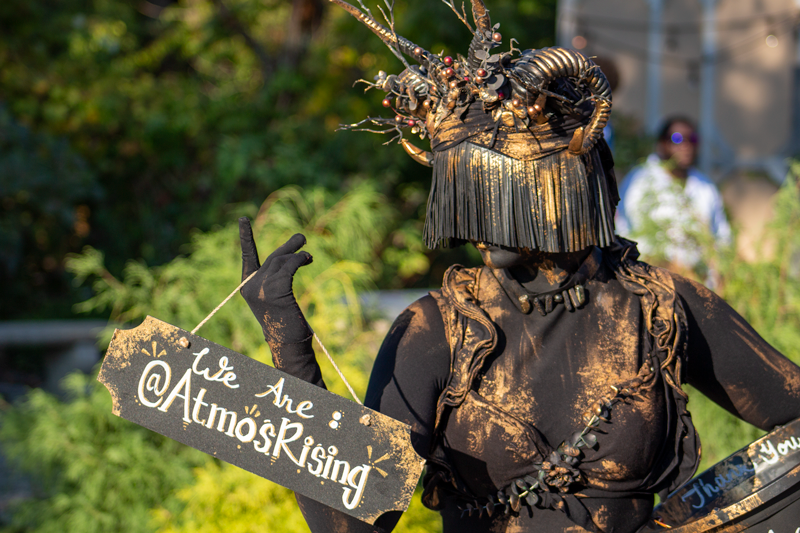
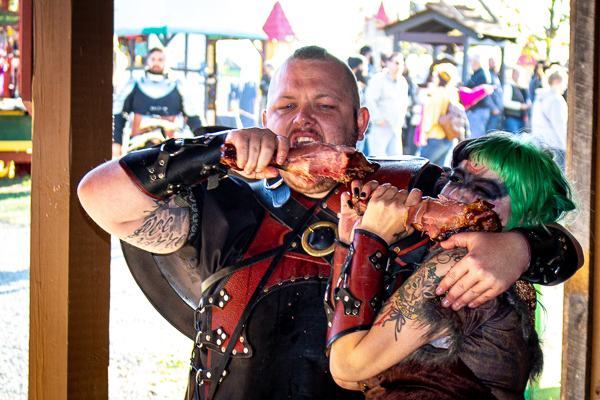
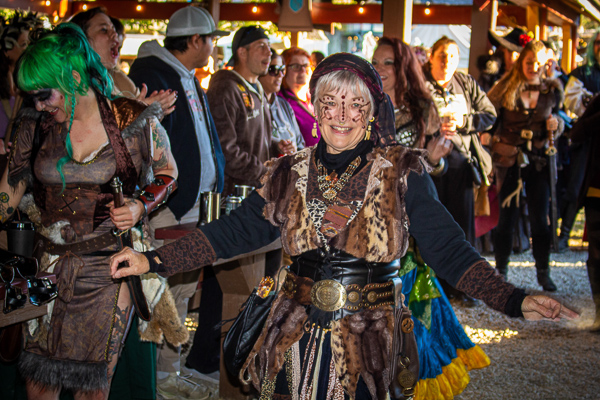
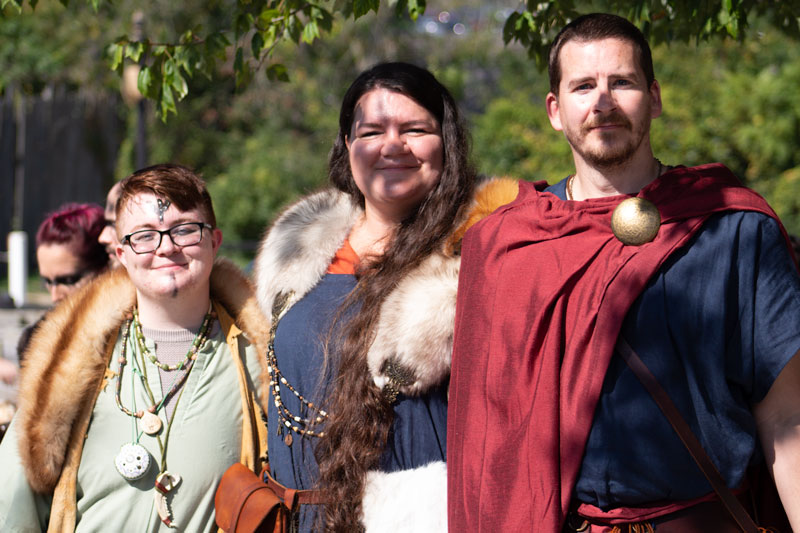
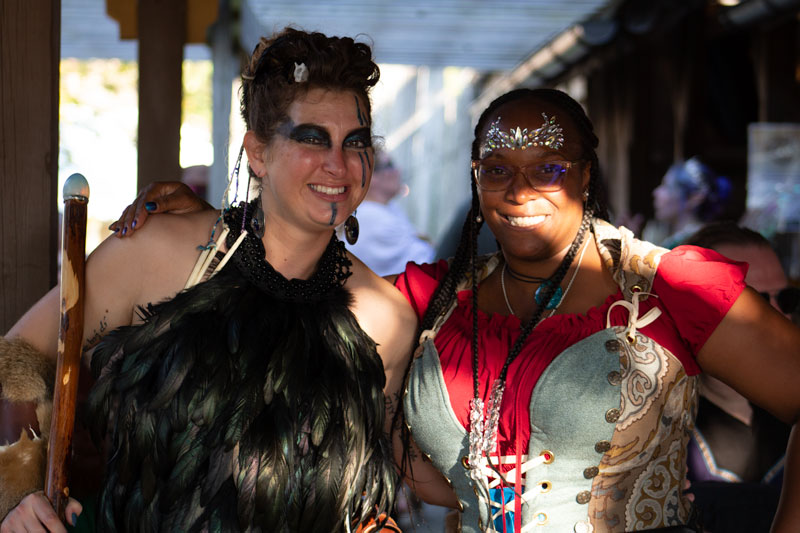
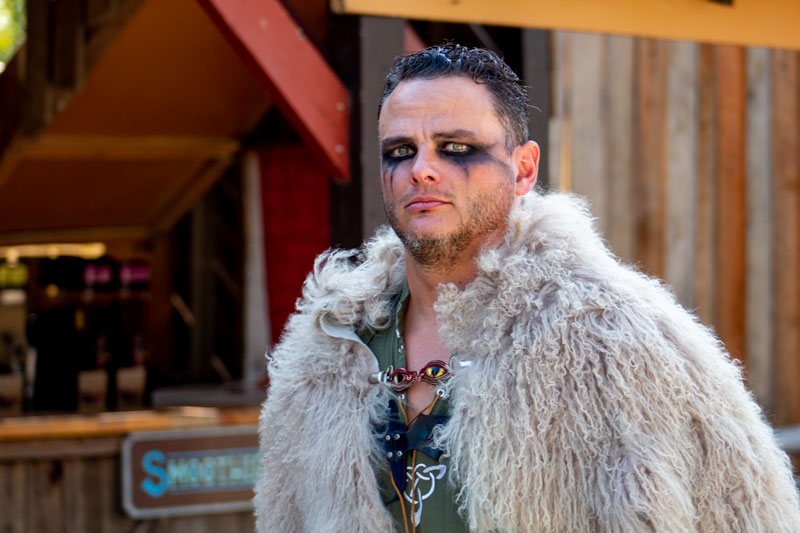
ORF Booths to Visit:
AC5 Chainmail – Bard’s Land
Brown Cow – Upson Downs
Catskill Mountain Moccasins – Wanderer’s Way
Cloaked in Shadows – Market Square
Lost Viking Hoard – Bard’s Lane
The Wired Viking – Upson Downs
Tunky’s Garb Shop – Poet’s Crossing
Vllad, The Viking Guy – Bard’s Lane
Remember, most garbs do not come together over the course of a season. The best attires are the ones that started off with a relatively simple look and then built it up over the course of years. Ask around and you will find that many of our patrons were waiting for just the right piece to complete their outfit, and then BOOM, found it when they were least expecting. Garb is a labor of love and self-expression, and we adore seeing what our visitors will come up with every season. Be sure to share your garb with #orfgarb or #orf2025 so we can see how it’s coming along!
